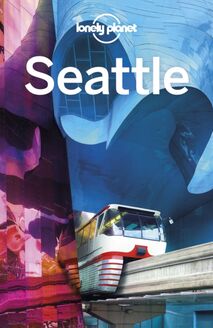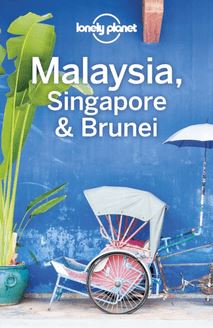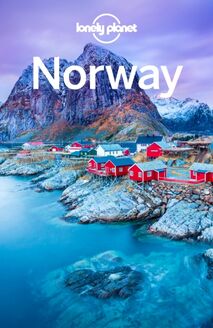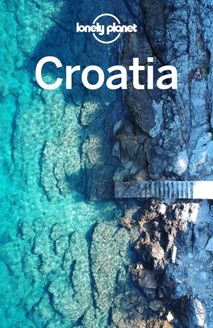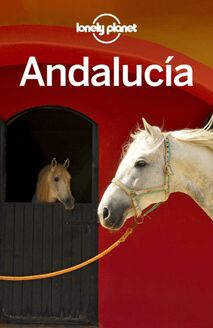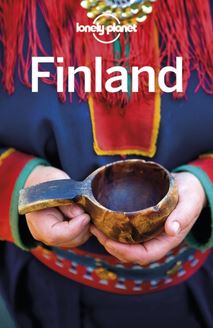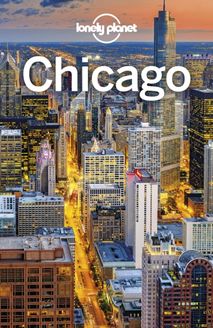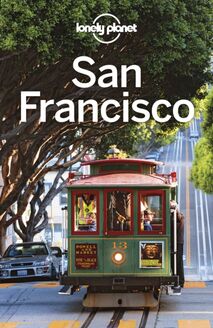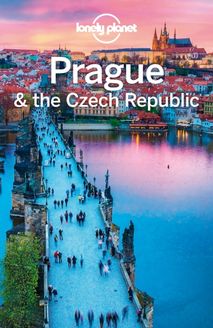Lonely Planet Belgium & Luxembourg , livre ebook
334
pages
English
Ebooks
2019
Vous pourrez modifier la taille du texte de cet ouvrage
Obtenez un accès à la bibliothèque pour le consulter en ligne En savoir plus
Découvre YouScribe en t'inscrivant gratuitement
Découvre YouScribe en t'inscrivant gratuitement
334
pages
English
Ebooks
2019
Vous pourrez modifier la taille du texte de cet ouvrage
Obtenez un accès à la bibliothèque pour le consulter en ligne En savoir plus
Publié par
Date de parution
01 avril 2019
Nombre de lectures
7
EAN13
9781788684996
Langue
English
Poids de l'ouvrage
34 Mo
Publié par
Date de parution
01 avril 2019
Nombre de lectures
7
EAN13
9781788684996
Langue
English
Poids de l'ouvrage
34 Mo
Belgium & Luxembourg
Contents
PLAN YOUR TRIP
Welcome to Belgium & Luxembourg
Belgium & Luxembourg’s Top 15
Need to Know
First Time Belgium & Luxembourg
If You Like
Month by Month
Itineraries
Travel with Children
Regions at a Glance
ON THE ROAD
BRUSSELS
Sights
Tours
Sleeping
Eating
Drinking & Nightlife
Entertainment
Shopping
Information
Getting There & Away
Getting Around
BRUGES, GHENT & NORTHWEST BELGIUM
Bruges
Damme
Belgian Coast
Knokke-Heist
De Haan
Bredene
Zeebrugge & Lissewege
Ostend (Oostende)
Nieuwpoort
Oostduinkerke
De Panne
Beer Country
Veurne
Diksmuide
Poperinge
Ypres (Ieper)
Ypres Salient
Kortrijk
Oudenaarde
Geraardsbergen
Ghent
ANTWERP & NORTHEAST BELGIUM
Antwerp (Antwerpen)
Around Antwerp
Westmalle
Turnhout
Lier
Mechelen
Leuven
Hageland
Diest
Hasselt
Haspengouw
Tienen
Zoutleeuw
Sint-Truiden
Tongeren
WALLONIA
Western Wallonia
Tournai
Pipaix
Aubechies
Ath
Lessines
Enghien
Mons
Binche
Nivelles
Waterloo Battlefield
Louvain-la-Neuve
Charleroi
Thuin
Aulne
Botte de Hainaut
Philippeville
Mariembourg & Nismes
Chimay
The Ardennes
Namur
Crupet
Dinant
Han-sur-Lesse
Rochefort
St-Hubert
Bouillon
Orval
Arlon
Bastogne
Achouffe
La Roche-en-Ardenne
Durbuy
Huy
Liège
Verviers
Spa
Coo
Stavelot
The Eastern Cantons
LUXEMBOURG
Luxembourg City
Moselle Valley
Schengen & Remerschen
Müllerthal Region
Larochette
Echternach
Beaufort
Éislek
Bourscheid
Diekirch
Vianden
Esch-sur-Sûre
Wiltz
Clervaux
UNDERSTAND
Understand Belgium & Luxembourg
Belgium & Luxembourg Today
History
The Belgian People
Creative Cuisine
Belgian Beer
Arts & Architecture
SURVIVAL GUIDE
Directory A-Z
Accessible Travel
Accommodation
Activities
Climate
Customs Regulations
Discount Cards
Electricity
Food
Health
Insurance
Internet Access
Legal Matters
LGBT+ Travellers
Money
Opening Hours
Post
Public Holidays
Safe Travel
Telephone
Time
Toilets
Tourist Information
Visas
Work
Transport
Getting There & Away
Entering the Region
Air
Land
Sea
Getting Around
Air
Bicycle
Boat
Bus
Car & Motorcycle
Hitching & Ride Sharing
Local Transport
Train
Language
Behind the Scenes
Our Writers
Welcome to Belgium & Luxembourg
Bruges canals, Antwerp fashion, Luxembourg bubbles, Trappist beers, chocolate and chips, belfries and castles, crazy carnivals… These two small countries certainly punch above their weight.
Unexpected Riches
As well as historic town cores and a bounty of Unesco sites, discover stalactite-filled caves, post-industrial heritage, forest-edged kayaking rivers, rural châteaux and sandy North Sea beaches. Cutting-edge museums and finely endowed galleries unveil the complex history of what has been a crucible of European art, from the Flemish Primitives, through Rubens’ voluptuous nymphs and art nouveau’s sinuous curves to bizarre surrealism, comic strips and 21st-century fashion. And in spring, don’t miss some of the world’s weirdest carnivals lubricated by some of the planet’s finest beers.
Battle Scars
Since at least Roman times, what we now call Belgium and Luxembourg have regularly fallen in the path of invaders, not least in the last two centuries. A lion statue atop a conical artificial hill overlooks the world-famous Waterloo battlefield where Napoleon was finally defeated. Seemingly endless rows of white gravestones in Flanders fields commemorate four years of WWI hell. And haunting museums honour those who died in WWII, notably during the devastating ‘Battle of the Bulge’, Hitler’s last-ditch counter-attack in Luxembourg and the Ardennes.
Town & Country
With magical market squares, belfries, canals and step-gabled houses, most of Belgium’s ‘art’ cities lie in predominantly flat, Dutch-speaking Flanders. These places are close together and seamlessly interconnected by regular public transport. In contrast, much of hilly, French-speaking Wallonia is profoundly rural, so it’s useful to have your own wheels to reach the activity-packed holiday spots of the Ardennes. Luxembourg falls somewhere between the two: beyond its compact, sophisticated capital lie many pretty castle villages that are rural yet relatively accessible.
Chips, Chocolate & Beer
Luxembourg is a gourmet’s paradise while Belgium’s remarkable range of comestible specialities goes far beyond the country’s diminutive size. Brussels and Liège compete over what constitutes the perfect waffle, while countless speciality shops sell sublime chocolates. Jumbo mussels are served with crispy, twice-fried frites that you’ll only call ‘French’ fries at your peril. Brewing is an almost mystical art in Belgium with a dazzling rainbow of different styles, most notably the six great Trappist beers, created within active monasteries. Meanwhile Luxembourg maintains its own celebratory mood with an ever-flowing supply of local Moselle bubbly.
Brussels | S-F / SHUTTERSTOCK ©
Why I Love Belgium & Luxembourg
by Mark Elliott, Writer
As a school child, some of my most vivid travel memories were of Luxembourg’s Clervaux castle rising spookily through the mist. And of Brussels’ baffling Atomium that seemed to be related more to my chemistry lessons than to practical architecture. Later, living 15 years in Belgium, I came to realise that the country’s love of surrealism goes deeper than Magritte’s pipe or the orange-lobbing Gilles at Binche carnival, creating a self-deprecating humour in people for whom their country’s very creation sometimes still seems like an 1830 geopolitical joke.
For more, see Our Writers
Belgium & Luxembourg’s Top 15
Bruges
Laced with canals and full of evocative step-gabled houses, Bruges is the ultimate picture-postcard tourist destination. Of course, that’s all too well known and the city is often overrun, but come midweek in February you may have it largely to yourself. Year-round you can escape the crowds and carriage rides by dipping into some of Bruges’ majestic art collections. The Groeningemuseum is hard to beat, offering a potted history of Belgian art, with an outstanding selection of works by the Flemish Primitives.
YASONYA / SHUTTERSTOCK ©
Top Experiences
Brussels’ Grand Place
Brussels’ heart beats in the Grand Place – the most theatrically beautiful medieval square in Europe. It is ringed by gold-trimmed, gabled guildhouses and flanked by the 15th-century Gothic town hall. The cobblestones were laid in the 12th century, when the square was used as a marketplace; the names of the surrounding lanes evoke herbs, cheese and poultry. And indeed the Grand Place still hosts a flower market, as well as Christmas stalls, concerts and – every two years – a dazzlingly colourful ‘carpet’ of flower petals.
CAPTUREPB / SHUTTERSTOCK ©
Top Experiences
Carnival Capers
If your neighbours’ idea of a good time is to dress up in barrel costumes jingling with little bells, don spooky masks and ostrich-feather hats and then go throwing oranges at passers-by, you might wonder about their sanity. Then again you might just be living in Binche. That’s the town whose unique Mardi Gras carnival has long been so indulgent it gave the English language the term ‘binge’. Belgium’s carnival season stretches way beyond Shrove Tuesday with other unique twists, especially in Stavelot, Malmedy and Aalst.
Carnaval de Binche | KOBBY DAGAN / SHUTTERSTOCK ©
Top Experiences
Chocolate
In 1857 Swiss confectioner Jean Neuhaus opened a sweet shop in Brussels’ glorious Galeries St-Hubert – it’s still there. But it was in 1912 that Neuhaus’ son was credited with creating that most Belgian of morsels, the praline, by filling a chocolate shell with a flavoured centre. Belgian chocolates remain world-beaters due to the local insistence on 100% cocoa butter, and every town has its selection of chocolatier shops: hushed, hallowed temples where glove-handed assistants patiently load up ballotin boxes with your individual selection.
Chocolate maker, Benoit Nihant | © CLAUDE LEE SADIK. USED WITH PERMISSION OF BENOIT NIHANT
Top Experiences
Flemish Primitives
Western representational art was transformed in the 15th century by Bruges-based painters, notably by the Van Eyck brothers, whose mastery of oil paints allowed them to simulate reality and paint faces that expressed emotional states. This development was aided by Flanders’ economy, which meant that the time was ripe for mercantile sponsors to commission secular works as well as religious works full of hidden messages… Does Ghent’s Mystic Lamb really hold secret clues to a mysterious Jesus legacy?
The Adoration of the Mystic Lamb | PECOLD / SHUTTERSTOCK ©
Top Experiences
Belfries & Begijnhoven
When Unesco contemplated Belgium’s magnificent smorgasbord of medieval architecture, it was clearly too overwhelming to decide what should go on the World Heritage list. So a whole range was selected. This includes 33 belfries (churchlike clock towers built as symbols of civic freedoms), fine examples of which are found in Tournai, Bruges and St-Truiden. Also included were around 20 beautiful begijnhoven: enclosed urban villages that were a form of ‘convent lite’. It’s hard to beat those of Lier , Turnhout, Diest and Kortrijk.
Begijnhoven, Kortrijk | CLAUDINE VAN MASSENHOVE / SHUTTERSTOCK ©
Top Experiences
Castles
Get ready for an overload of spectacular castles. Antwerp and Ghent both have medieval ones right in their city centres. For ruins, Larochette, Bourscheid and Beaufort are hard to beat, while the Ardennes town of Bouillon is dominated by the remains of a castle that was sold to fund a crusade. French-style châteaux include Modave and riverside Freÿr. Then there are vast, dour but powerfully brooding fortress-citadels at Namur, Huy and Dinant that retained military importanc

